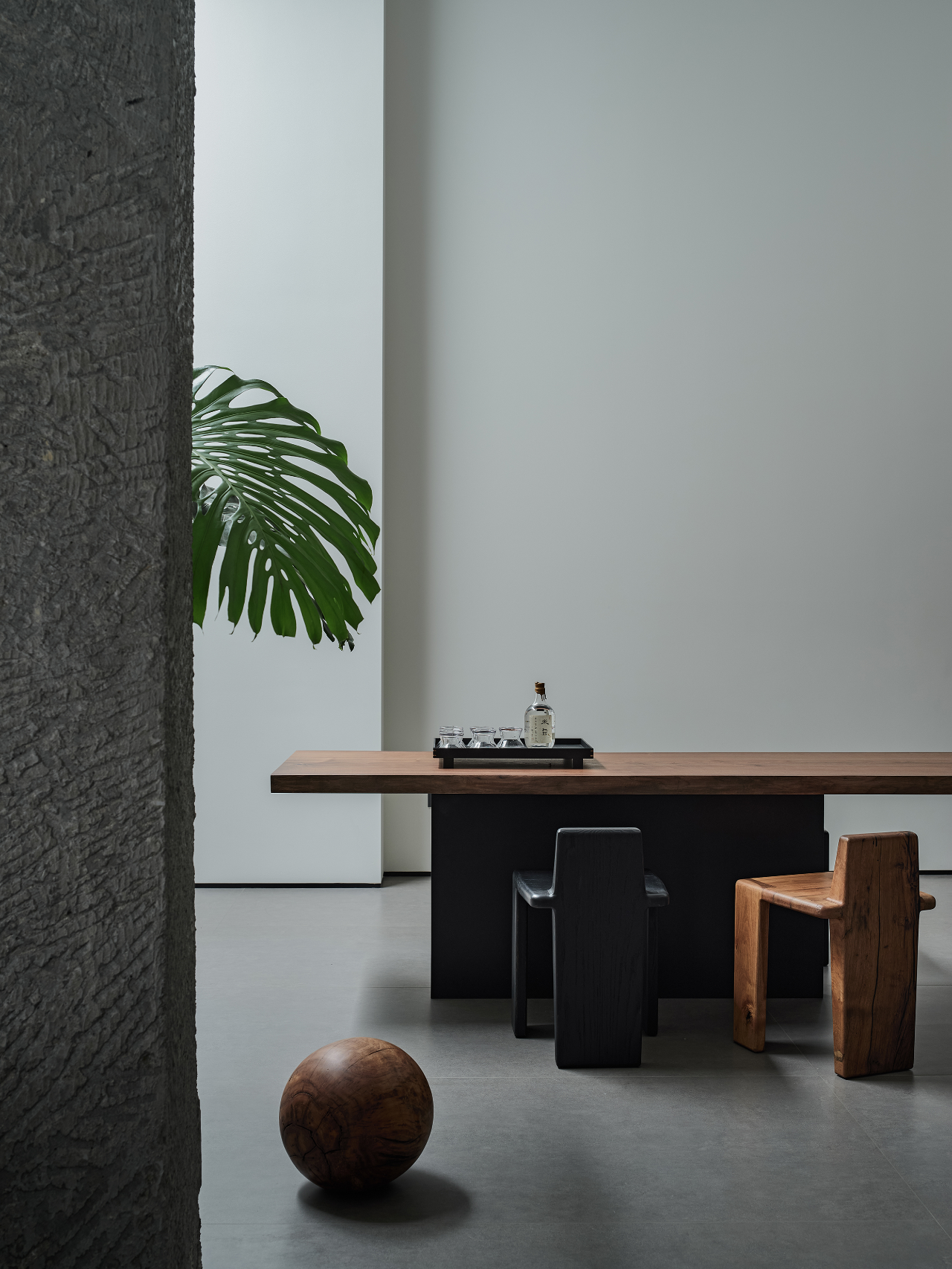Zürich Main Station Dürig AG
2015-02-11 01:00
© Ruedi Walti
鲁迪·瓦尔蒂


架构师提供的文本描述。洛文斯特拉过境站
Text description provided by the architects. Löwenstrasse Transit Station
新的地下L wenstrasse中转站构成了跨城市铁路线的中心部分。它有四条铁轨和两个站台,位于中央车站上4至9号轨道以下。站台的东端是对齐的横向大厅的历史主站,然后隧道下的莱姆河下,向奥利肯。在西边,一条坡道将铁轨输送到兰斯街地下通道上方的现有铁路网中,并一直延伸到贯穿林马特山谷的铁路线。洛文斯特拉车站的布局有意识地借鉴了现有的博物馆街区域火车站的概念。然而,主要的区别在于,洛文斯特拉车站的月台层配备了两个420米长的中央月台,在所有建筑阶段完工后,它们还可以容纳较长的城际运输组合。站台上方,位于地下16米处,是一个新的购物层,向东和西延伸,被西尔河打断,西尔河流经主站。三个交叉连接-拓宽的Sihlquai通道、新的Gessnerallee通道和现有L wenstrasse通道的延伸-创造了短短的换乘路线,并将L wenstrasse站与主要车站的其他区域和该市毗邻地区连接起来。
The new underground Löwenstrasse transit station forms the centrepiece of the cross-city rail link. With its four railway tracks and two platforms it is situated below tracks 4 to 9 of the upper central station. The east end of the platform is aligned underneath the transverse hall of the historical main station, after which the tunnel descends beneath the River Limmat towards Oerlikon. Towards the west a ramp concludes by feeding the track into the existing rail network above the Langstrasse underpass and onwards to the railway lines running through the Limmat Valley. The layout of the Löwenstrasse station consciously borrows from the concept of the existing Museumstrasse regional railway station. The main difference, however, is that the platform level of the Löwenstrasse station is equipped with two 420-meter-long central platforms, allowing them, after the completion of all the building phases, to additionally accommodate longer intercity carriage compositions. Above the platform, which is situated 16 meters below ground, is a new shopping level, stretching both east and west and interrupted by the River Sihl, which flows beneath the main station. Three cross connections – the broadened Sihlquai passage, the new Gessnerallee passage and the extension of the existing Löwenstrasse passage – create short transfer routes and connect the Löwenstrasse station with other areas of the main station and the adjoining areas of the city.
Floor Plan


© Ruedi Walti
鲁迪·瓦尔蒂


Floor Plan


空间组织与存取
Spatial Organisation and Access
直截了当和排列清晰的通道改善了综合体地下部分的总方向。宽敞的通道和大厅方便了乘客的自由流动。三个功能不同的层次-平台层、购物层和历史上的地面车站大厅-在空间上彼此严格分开。这种区别也表现在物化,创造了容易识别的位置。
Straightforward and clearly arranged access improves the general orientation in the underground sections of the complex. Generously dimensioned passages and halls facilitate free passenger flow. The three functionally differing levels – the platform level, the shopping level and the historical overground station hall – are strictly separated from each other in spatial terms. This differentiation is also expressed in the materialisation, creating readily identifiable locations.
© Ruedi Walti
鲁迪·瓦尔蒂


垂直输送芯
Vertical Conveyance Cores
垂直通道,如楼梯,自动扶梯和电梯,形成连续的实体结构运输核心贯穿所有的水平。它们的几何形状对现有的建筑环境作出反应,形成单独的体积,在一定程度上也发挥结构功能,例如,作为铁路车站所列屋顶上现有支座的轴承。由于新的地铁站的轨道位置无法与上述站台大厅的轨道位置一致,因此有必要开发一种特殊的解决方案,用于使用斜轴从洛温斯特拉车站出现的乘客升降机。倾斜的升降机外壳在空间上非常突出,是过去几十年基础设施发展的几何约束的标志。
Vertical means of access such as stairs, escalators and lifts are formed as continuous solid-structure conveyance cores running through all the levels. Their geometry responds to the existing built surroundings, forming individual volumes that, in part, also perform structural functions, for instance acting as bearings for existing supports in the listed roof of the railway station. The fact that the track positions in the new underground station could not be aligned to mirror those in the platform hall above necessitated the development of a special solution for the passenger lifts emerging from the Löwenstrasse station by using slanted shafts. The inclined lift casings stand out spatially, acting as markers to the geometrical constraints of the infrastructure developments of the past decades.


© Ruedi Walti
鲁迪·瓦尔蒂




购物层作为流通空间
Shopping Level as Circulation Space
地下空间的设计创造了一种独特、友好和清晰的氛围。轻盈、光滑、时尚的表面将购物层转变为现代购物中心,成为一个流通空间。在这个过程中,同样的材料和照明概念被应用在所有的大厅和通道。旁边是严格的照明概念,简单而有力的物化和色彩方案在露天商店正面,封闭的墙壁空间,地板和天花板创造了一个中立的空间印象。该建筑功能强大,无需装饰。商店橱窗展示,广告,SBB寻路系统,以及人们自己给空间赋予足够的色彩。建筑构成了一个平静的背景标志,用途和广告。
The design of the subterranean spaces creates a distinct, friendly and clear atmosphere. Light, smooth and stylish surfaces transform the shopping level into a modern shopping centre as a circulation space. In the process the same material and lighting concepts are applied in all of the halls and passages. Flanked by the stringent lighting concept, the simple and robust materialisation and colour scheme in the open shop fronts, the closed wall spaces, the floors and the ceilings creates a neutral spatial impression. The architecture is highly functional and dispenses with decoration. The shop-window displays, the advertising, the SBB wayfinding system and the people themselves impart enough colour to the spaces. The architecture forms a calm backdrop to the signage, the uses and the advertising.
© Ruedi Walti
鲁迪·瓦尔蒂


月台层作为候车室
Platform Level as Waiting Rooms
作为地下洛文斯特拉车站的候车室,两个站台综合体,连同安装展厅,创造了光之岛。相比之下,隧道墙、铁轨和铁轨上的屋顶都是漆黑的。基本照明来自条形照明,分别连接在每个安装展厅的外部轮辋上。光源的暖色温度有助于强调这种集中的空间印象。
As the waiting rooms of the underground Löwenstrasse station the two platform complexes, together with the installation galleries, create islands of light. In contrast the tunnel walls, the railway tracks and the roofs over the tracks are kept dark. The basic illumination comes from strip lighting, attached respectively on the outer rims of each of the installation galleries. The warm colour temperature of the light source serves to accentuate this centralized spatial impression.
© Ruedi Walti
鲁迪·瓦尔蒂












































































Architects Dürig AG
Location Zurich Main Station, 8001 Zürich, Switzerland
Category Train Station
Design Team Baumann Armin, Brantschen Armin, Breckner Irene, Buckingham Bruce, Cornuz Gilbert, Domagalski Joanna, Dürig Jean-Pierre, Dürr Judith, Fitzi Otto, Handte Sandra, Isler Dominik, Kaufmann Isabelle, Kempf Simon, Kimmig Bettina, Kitanishi Luiza, Labhart Katharina, Laue Sacha, Noe Tobias, Ramser Benedict, Simic Sandra, Trottmann Simone, Wengle Martin
Area 95000.0 sqm
Project Year 2014
Photographs Ruedi Walti
























